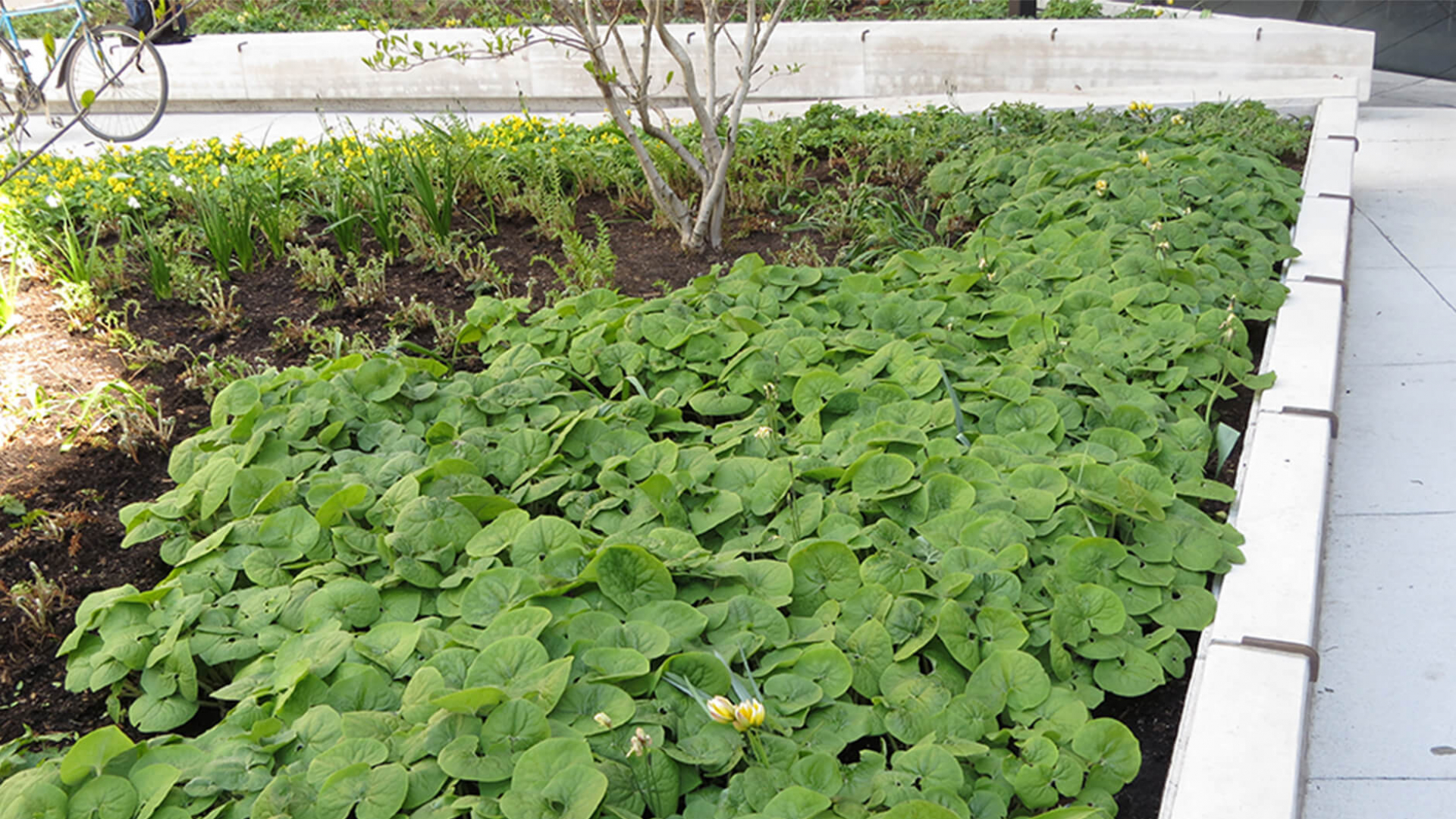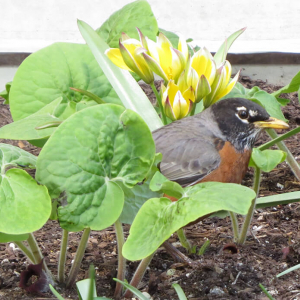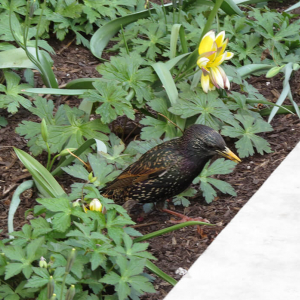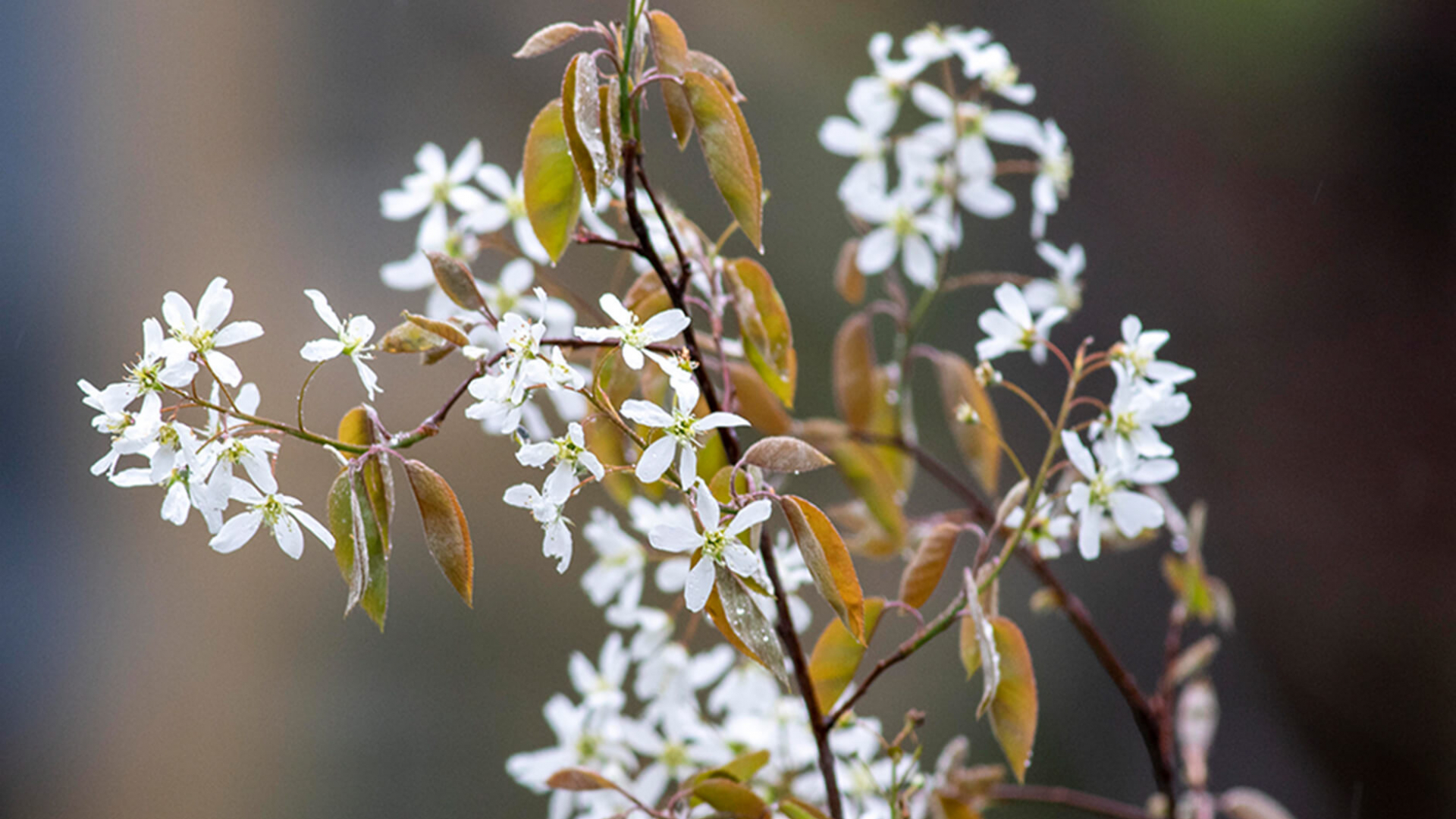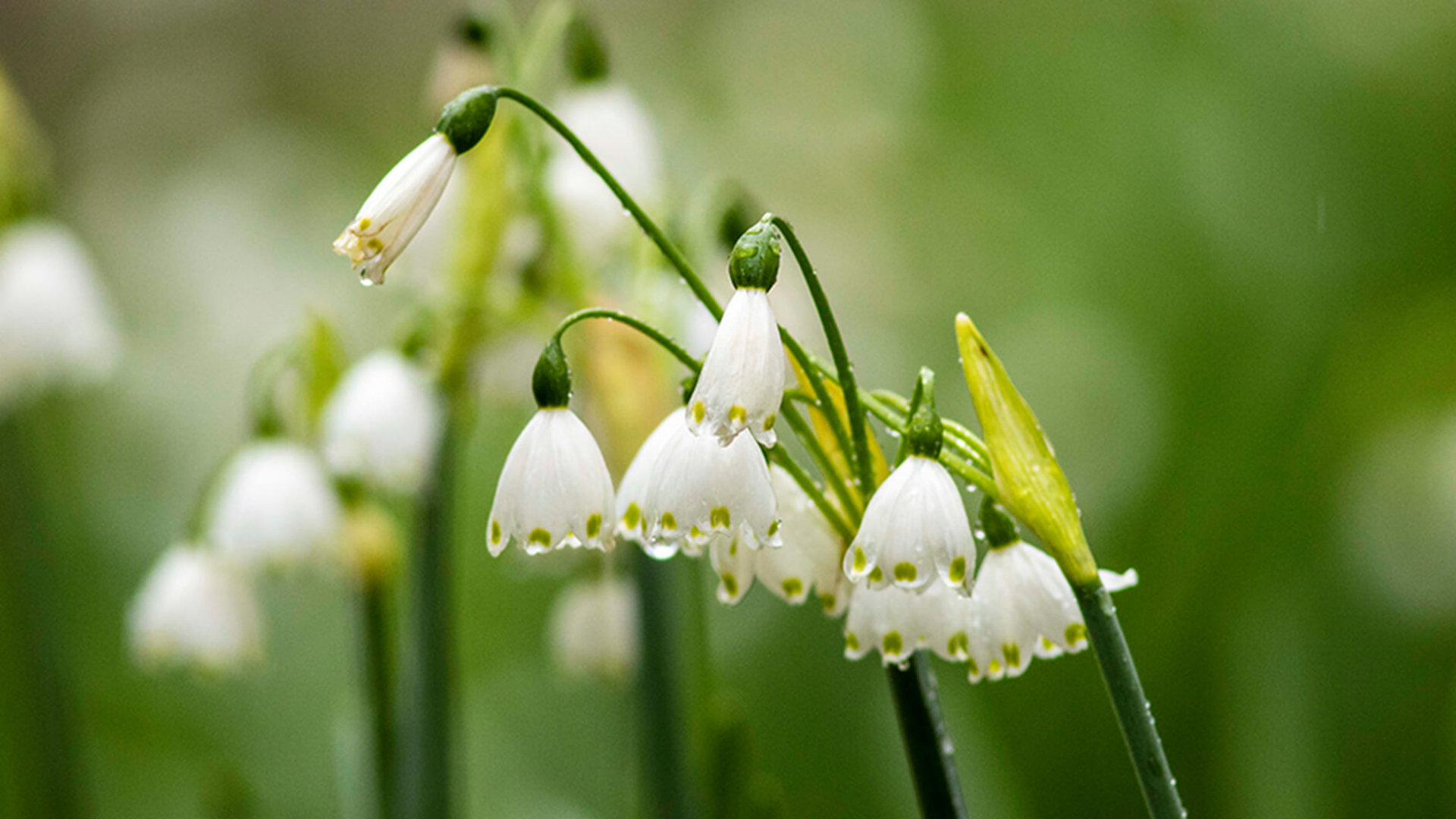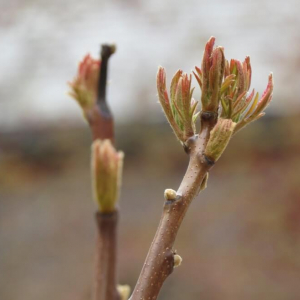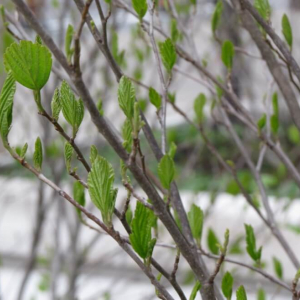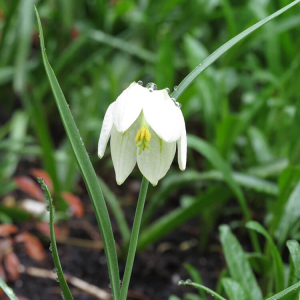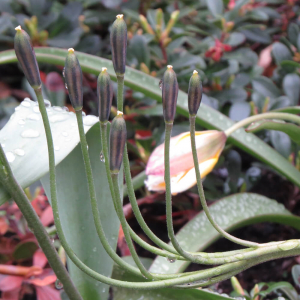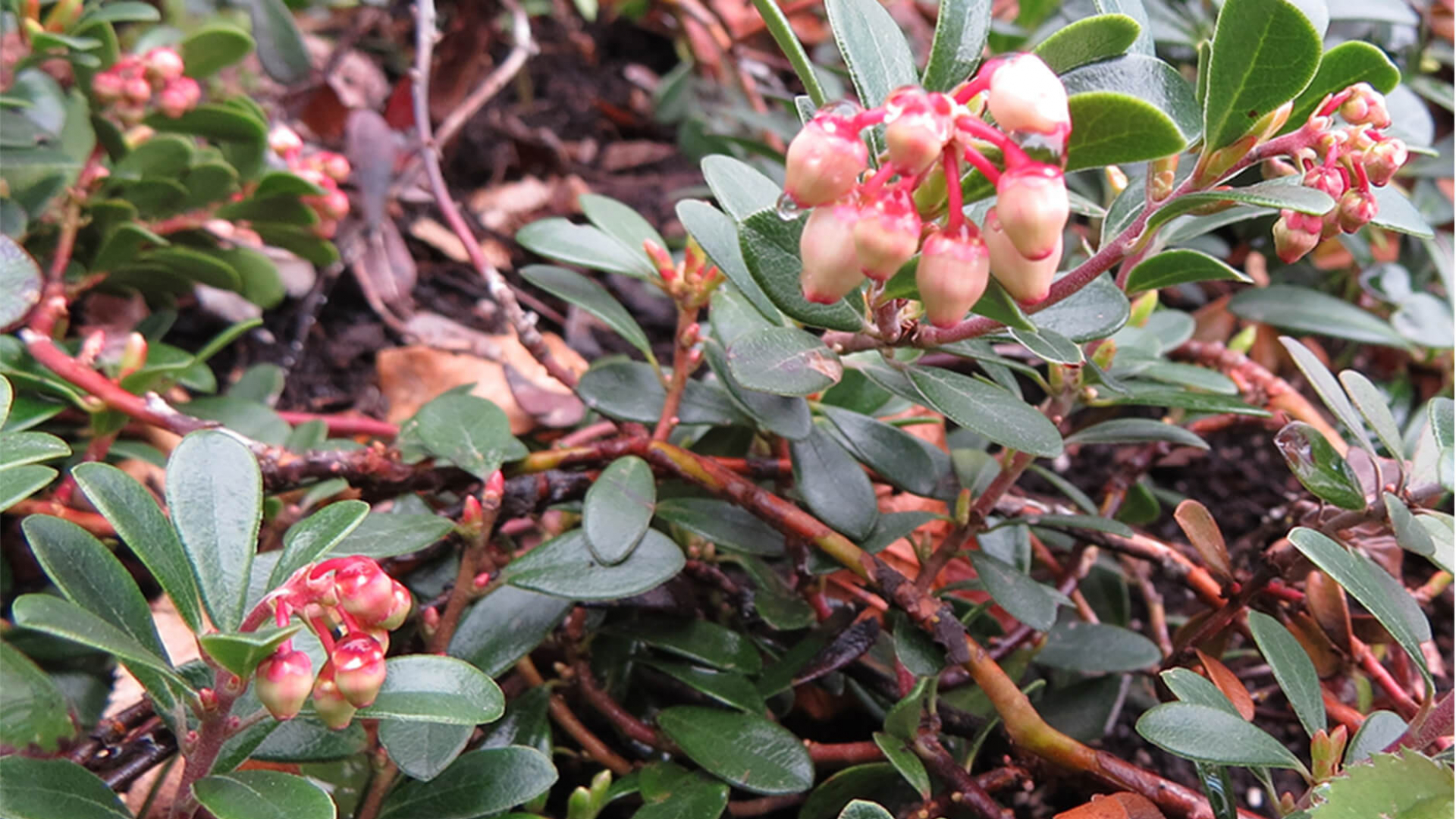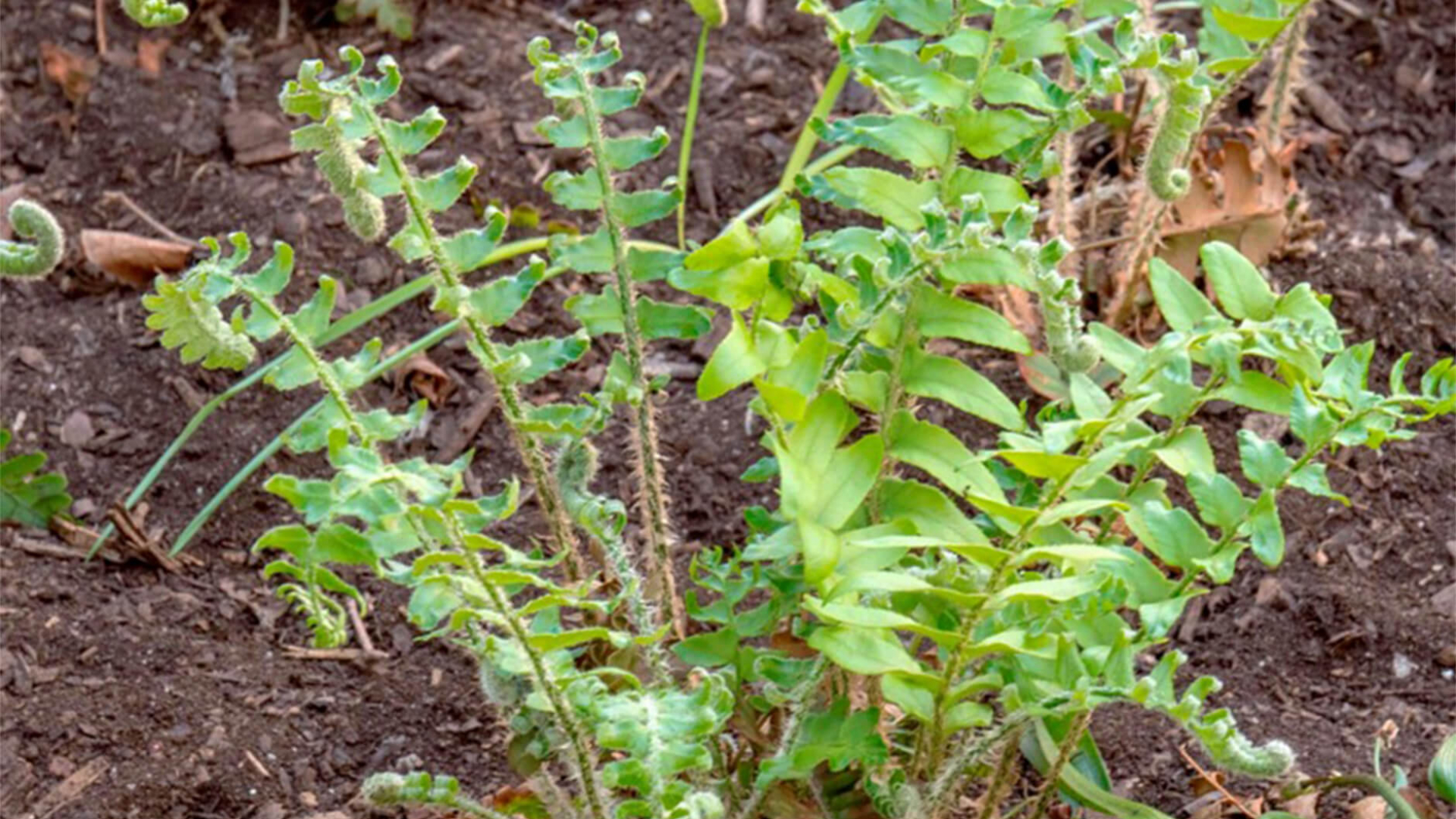Regular updates on what’s blooming and who’s visiting
Despite the cool, rainy weather, the plaza gardens have filled in nicely over the past two weeks. The wild ginger is now a carpet of green, the barren strawberry is covered in bright yellow blooms, and the ferns are popping up. A new wave of spring bulbs has emerged and many of the native wildflowers and shrubs have come into bloom. The insect activity is a bit slow, but it hasn’t deterred the birds!
From left to right: Robin (Turdus migratorius) in wild ginger with species tulip. European Starling (Sturnella vulgaris) in the wild geranium. Photographs by Kevin Seymour.
Thursday, April 29
Smooth serviceberry (Amelanchier laevis) is in full bloom beside the terrace along Philosopher’s Walk. Its clusters of five-petaled white flowers contrast with the unfolding reddish leaves.
On the plaza, summer snowflake or Loddon lily (Leucojum aestivum) is in bloom. This less commonly planted spring bulb is native to many regions of Europe and central Asia. Its green-dotted, bell-shaped flowers hang like lanterns on a lamp post.
Tuesday, May 4
Leaves on the shrubs are beginning to unfold.
The cut-leaf staghorn sumach (Rhus typhina ‘laciniata’) leafs out from the branch tips first, then progresses down the stem. The buds and the young leaves are hairy. This cultivar of our native staghorn sumach has smooth rather than velvety stems.
The veins on the American witch-hazel (Hamamelis virginiana) leaves give them a corrugated appearance as they unfold.
Fritillary or white snakeshead (Fritillaria meleagris ‘alba’) a spring bulb native to Eurasia is distinctive for its nodding flower that looks like a dangling tulip.
The Turkistan tulips (Tulipa turkistanica) have dropped their petals to expose their developing fruit capsules, which are attractive in their own right.
The evergreen leaves of bearberry (Arctostaphylos uvaursi) have greened-up and its clusters of pink, urn-shaped flowers are almost fully expanded. Bearberry flowers are similar to those of Vaccinium species (blueberries and cranberries) which also belong to the heath family, Ericaceae.
Thursday, May 6
Christmas fern (Polystichum acrostichoides) is an evergreen fern whose fronds last through the winter. By this time of year, last year’s fronds have turned brown and flopped to the ground. They are replaced by a crop of new fronds that unfurl from the crown at the centre of the plant.

